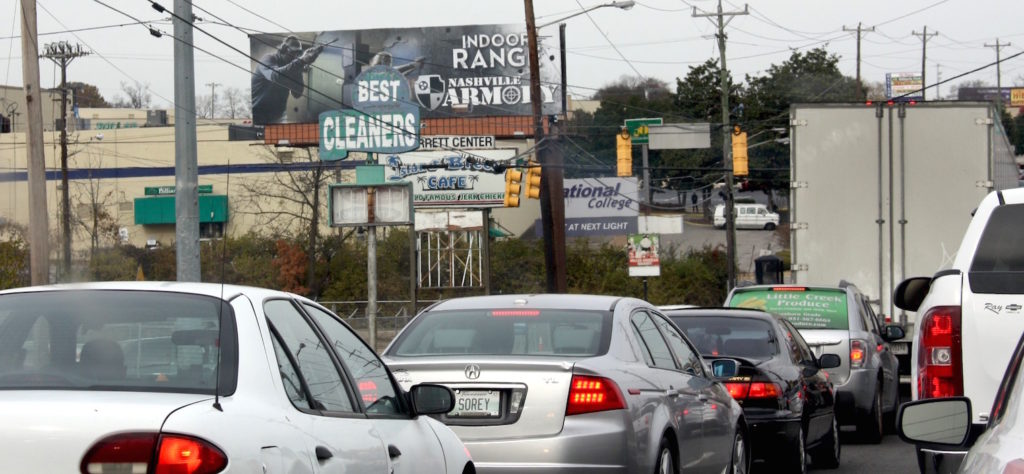
The slog of Nashville traffic only gets worse when school comes back into session, and Middle Tennessee transportation officials now say that drive times increase by 10 to 30 minutes during the school year.
Yet cities and the state are deploying some tactics to smooth the transition — and drivers who have seen congestion get worse have a few ideas, too.
“When school’s out, it’s beautiful. I love the commute. It feels like a day off,” said Jon Wilke, a radio producer. He drives nearly 50 miles each day from Gallatin to Cool Springs.
With school in, his tone changes.
“An hour-plus every day can really wear you down and age you a lot and can really set you up for a day of frustration in your office,” he said.
So Wilke takes advantage of flexible work hours — an idea that transportation planners wish more major employers would seize on, to reduce peak rush hours. And Wilke schedules almost daily work calls for the commute, or queues up podcasts and Bible verse listening.
And for Anna Grimes, who cuts across West Nashville, her school of thought is to always keep moving.
“If there’s an accident … it’s just a mess … You just have to make an educated guess: ‘OK, how bad is it going to be this afternoon?’ And then you start your little process.”
For her, that means avoiding West End Avenue — even cutting through Centennial Park if need be.
“I’m sure there’s a psychological component of ‘I’m not sitting still,’ ” she said.
With three kids, Grimes has had 16 years to find squiggly alternative routes.
Lately, she has gotten some help from Metro. To much fanfare,
the city re-timed its traffic signals in the past year, which has cut travel times. And engineers say the system is now responsive enough that it can take school pickup and drop-off times into account and keep traffic moving better than in the past.
“And then just be ready to man the phones,” said Jeff Hammond, Metro Public Works assistant director. “With the start of school … we’re always made aware of little things that aren’t working quite right.”
Meanwhile, the Tennessee Department of Transportation is evaluating what’s known as “active freeway management,” said Brad Freeze, director of traffic operations. One method would be placing stop-and-go lights on entrance ramps to control the flow.
“We’ve never done ramp metering in Tennessee. That has been shown to be an effective tool,” he said.
The question is whether the tactics can arrive fast enough, as school districts grow at about 3 to 7 percent a year.
Otherwise, commuters like Wilke can dream — patiently.
“I’m looking forward to self-driving cars,” he said, “when we can all just sit back and read a novel and listen to podcasts, or nap, and traffic kind of sorts itself out.”


